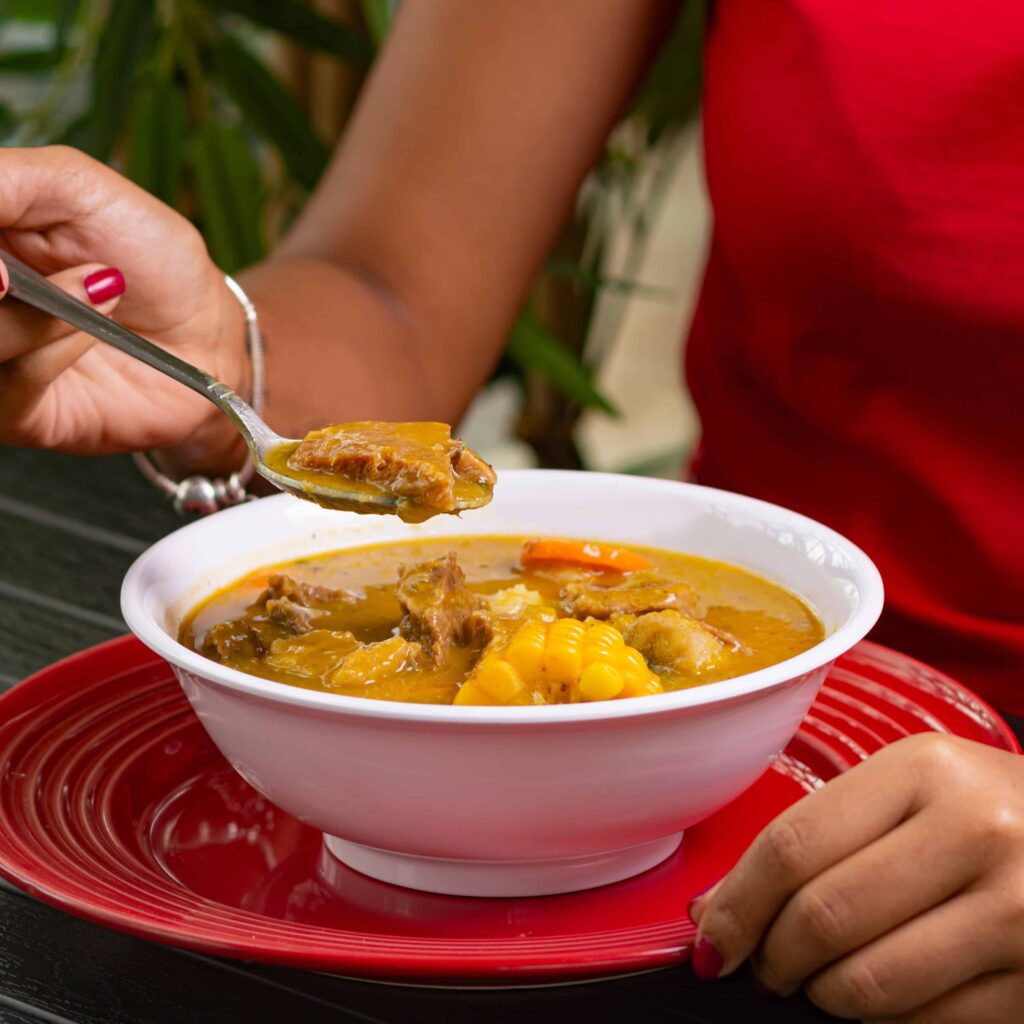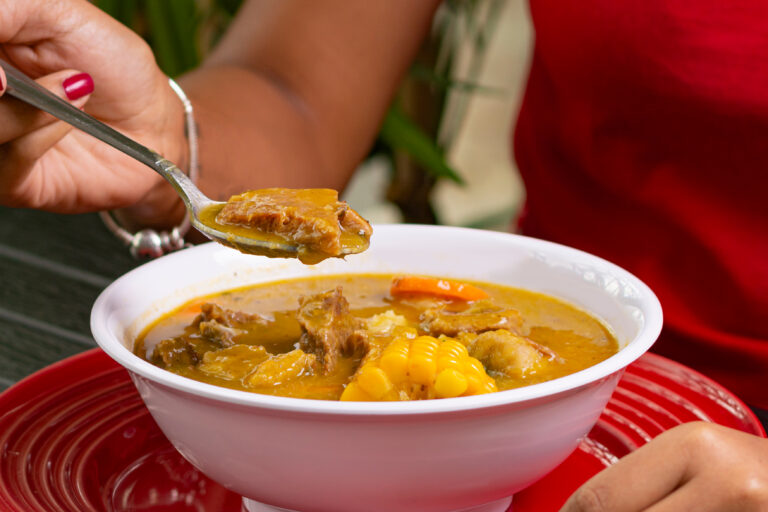
Sancocho is the national dish of the Dominican Republic. It’s a culinary symbol that unites Dominicans across regions and generations. This dish, steeped in tradition and cultural significance, offers a taste of the country’s rich history and diverse influences.
Our team at Remitly created this guide as part of our series that celebrates the traditional foods of our global customers. Enjoy!
The Origins of Sancocho
The roots of Sancocho can be traced back to Spain. However, it has evolved significantly since its arrival in the Dominican Republic. The indigenous Taino people, African slaves, and Spanish colonizers all contributed to its development.
Over time, this amalgamation of cultures gave birth to a unique version of Sancocho. It became an integral part of Dominican cuisine—loved by locals and visitors alike.
Ingredients Used in Sancocho
Sancocho is known for its robust flavor profile. Its ingredients reflect the agricultural bounty of the Dominican Republic. Meat—often chicken or beef—is a key component.
Root vegetables like yucca, taro root, and plantains add depth to the stew. Corn on the cob is also commonly used. These ingredients are simmered together with spices until they meld into a flavorful concoction.
A Step-by-Step Recipe for Sancocho
Sancocho is a dish that invites creativity, but here’s a basic recipe to get you started.
Ingredients:
- 1 lb of beef (preferably with bone)
- 1 lb of chicken
- Juice of 2 limes
- Salt and pepper to taste
- 2 tablespoons of oil
- 1 large onion, chopped
- 3 cloves of garlic, minced
- 2 bell peppers, diced
- 1 cup of chopped cilantro
- 4 cups of water or broth
- 2 green plantains, peeled and cut into chunks
- 1 yucca root, peeled and cut into chunks
- 2 ears of corn, cut into rounds
Instructions:
- Marinate the beef and chicken in lime juice, salt, and pepper overnight.
- Heat oil in a large pot over medium heat. Add onions, garlic, bell peppers and half the cilantro. Cook until softened.
- Add marinated meat to the pot and brown on all sides.
- Pour in water or broth—enough to cover the meat—and bring to a boil.
- Reduce heat to low and let it simmer for about an hour until meat is tender.
- Add plantains, yucca root, corn rounds to the pot. Continue simmering until vegetables are cooked through—about another hour.
- Stir in remaining cilantro before serving.
Variations of Sancocho Across the Dominican Republic
While there’s a basic recipe for Sancocho, variations abound across different regions in the Dominican Republic. Some prefer using pork instead of beef or chicken; others might add more types of root vegetables or even seafood.
These regional differences highlight how food can reflect local resources and preferences—making each bowl unique yet familiar.
How Sancocho is Served and Enjoyed
Sancocho is typically served with white rice, avocado slices, and hot sauce on the side. The stew itself is hearty enough to be a meal on its own, but these accompaniments add extra layers of flavor.
Enjoying Sancocho isn’t just about eating—it’s also about sharing. It’s often enjoyed in large gatherings where everyone can partake in this communal feast.
Occasions for Serving Sancocho
Sancocho isn’t just an everyday dish—it’s also reserved for special occasions. Birthdays, holidays, or even a family reunion might call for a pot of this comforting stew.
It’s not uncommon to see large pots of Sancocho simmering away during festivities. Its presence signifies celebration and unity—a testament to its cultural significance.
Influence of Sancocho on Other Cuisines
The influence of Sancocho extends beyond the Dominican Republic. Variations of this dish can be found across Latin America—each with their unique twist.
Whether it’s the Colombian version with more types of meat or the Venezuelan one with added squash—Sancocho continues to inspire culinary creativity across borders.
The Broader Cuisine of Dominican Republic
Dominican cuisine is as diverse as its people—a blend of Taino indigenous roots mixed with Spanish colonial influences and African traditions.
Staple Foods
Rice is a staple food in Dominican cuisine—it’s often served alongside beans (habichuelas) as part of ‘La Bandera Dominicana’, the national meal. Plantains, both ripe and green, are also widely used.
Popular Dishes
Beyond Sancocho, other popular dishes include Mangu (mashed plantains), Chicharron de Pollo (fried chicken), and Pescado con Coco (fish in coconut sauce). Each dish tells a story of the country’s rich cultural heritage.
Sweet Treats
Dominican Republic is known for its sweet treats too. Dulce de Leche, a caramel-like dessert made from condensed milk, is a favorite. There’s also Habichuelas con Dulce—a sweet cream of beans often enjoyed during Lent.
Beverages
When it comes to beverages, Morir Soñando—a mix of orange juice and milk—is a refreshing choice. For something stronger, there’s Mamajuana—a rum-based drink infused with herbs and spices.
Dominican cuisine offers an array of flavors that reflect its vibrant culture and history—making each meal an experience to savor.
Visit the homepage, download our app, or check out our Help Center to get started.
